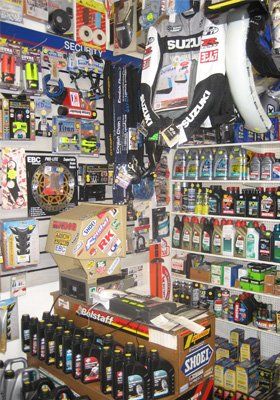Mastering Motorcycle Gears: How to Optimize Your Riding Experience
In the realm of motorcycling, understanding the art of equipment control is crucial for enhancing your riding efficiency. Appropriately understanding and making use of motorbike equipments can considerably impact control, fuel, and acceleration performance, transforming an average ride right into a seamless, exciting trip. By integrating exact change timing and adjusting gear option to various road problems, motorcyclists can make certain ideal engine efficiency and security. The subtleties of clutch control, throttle coordination, and gear auto mechanics beckon a deeper exploration, assuring to unlock the complete possibility of your machine. Exactly how can these methods be harnessed to truly maximize your riding experience?
Recognizing Equipment Mechanics
How do the ins and outs of equipment mechanics influence motorbike efficiency? At the core of motorcycle dynamics, gear auto mechanics play a critical role in transforming engine power into motion, inevitably determining rate and control. Gears, meticulously crafted elements, allow motorcyclists to maximize torque and rate, guaranteeing a smooth shift via various terrains and speeds. The equipment proportions, thoroughly developed, determine the relationship between engine revolutions and wheel turns, impacting velocity and gas performance.
Recognizing gear technicians begins with acknowledging the significance of the gearbox, which houses numerous gears of differing dimensions. These gears connect via a procedure known as meshing, where teeth of different gears involve to send power. The accuracy of this communication is vital; any imbalance or damage can bring about inefficient power transfer, preventing efficiency. In addition, the arrangement and size of gears affect the bike's capability to deal with different loads and rates.
Additionally, the principle of equipment changing is indispensable to making best use of performance. Prompt and smooth changes ensure that the engine runs within its optimum power band, avoiding unnecessary strain and enhancing longevity (motox parts nz). By comprehending these mechanical ins and outs, motorcyclists can accomplish a harmonious blend of effectiveness, power, and control, boosting their riding experience
Timing Your Changes
Shift timing proficiency is crucial for optimizing motorbike performance and enhancing the riding experience. Effectively timed changes make certain that the engine runs within its ideal power band, which is vital for keeping control, accomplishing smooth velocity, and ensuring the long life of the bike. Motorcyclists should create an intuitive feeling of when to shift gears, which involves understanding the relationship between engine transformations per minute (RPM) and rate.
To master change timing, pay attention to the engine's sound and really feel, as these offer important hints about when to change gears. The optimal shift factor usually happens when the engine approaches the top variety of its power band without reaching the redline. Shifting as well early can cause a lack of power, while moving also late might cause unneeded engine stress
Furthermore, roadway problems and riding style impact shift timing. In contrast, during freeway riding, fewer changes at higher speeds can be much more suitable.
Enhancing Fuel Performance
While mastering motorbike equipments is important for efficiency, enhancing fuel efficiency check these guys out is just as important for both ecological and economic reasons. Optimum fuel consumption not just lowers functional costs yet additionally decreases the environmental impact of riding. To achieve this, one need to comprehend the elaborate connection in between gear option and engine performance.
Riding in a higher equipment at lower rates can lead to engine hauling, which is harmful to both fuel economic climate and engine wellness. On the other hand, riding in lower equipments at high speeds results in unneeded fuel intake.
In addition, routine maintenance plays a critical function in gas performance. Making certain that the motorcycle is well-tuned, with clean air filters and appropriately inflated tires, can minimize and improve aerodynamics fuel wastage. Taking on a riding style that accepts steady velocity and smooth deceleration can contribute to much better fuel economic climate.

Techniques for Smooth Transitions
Attaining smooth equipment transitions is basic to enhancing the riding experience and ensuring the long life of a bike's transmission system. Appropriate equipment shifting not just adds to a smooth adventure but likewise minimizes deterioration on the mechanical components. To understand the art of smooth shifts, my explanation cyclists must focus on a few essential techniques.

Second of all, clutch control plays an essential function. Engaging and disengaging the clutch efficiently needs technique. The clutch lever need to be released progressively, permitting a seamless transfer of power from the engine to the wheels without causing a jolt or sudden movement.

Adjusting to Road Conditions
Navigating diverse road problems is a critical skill for any motorcyclist intending to preserve control and security. Whether you're riding on damp surfaces, gravel roadways, or browsing sharp turns, your capability to adjust your gear use and riding method is critical. Comprehending exactly how to readjust your equipments properly can dramatically impact grip and security, making certain a safer journey.
In comparison, when riding on crushed rock or irregular terrain, reduced gears are more effective. Reduced gears provide much better control and allow you to respond even more quickly to unforeseen modifications in the roadway surface area.
Sharp contours demand exact gear management to balance rate and control. Downshifting before getting in a contour can help maintain energy while guaranteeing the motorcycle stays stable throughout the turn. Consistent technique in different problems boosts reference your capability to react and predict to changes in road appearance and incline.
Conclusion
Grasping motorbike gears substantially boosts the riding experience by enhancing control, velocity, and gas effectiveness. Adjusting equipment option to numerous road conditions, such as making use of higher gears on wet surfaces and reduced gears on crushed rock, more enhances handling and safety and security.
Comprehending equipment auto mechanics begins with identifying the importance of the transmission, which houses multiple gears of differing sizes. These gears connect via a procedure known as meshing, where teeth of various equipments involve to transmit power (motorcycle parts nz). Mild changes to the throttle during equipment changes can avoid jerky motions and keep a regular riding rate
Whether you're riding on damp surfaces, crushed rock roadways, or navigating sharp turns, your ability to adapt your gear use and riding technique is vital. Adjusting gear option to numerous roadway problems, such as using greater gears on damp surface areas and reduced gears on gravel, further boosts handling and security.